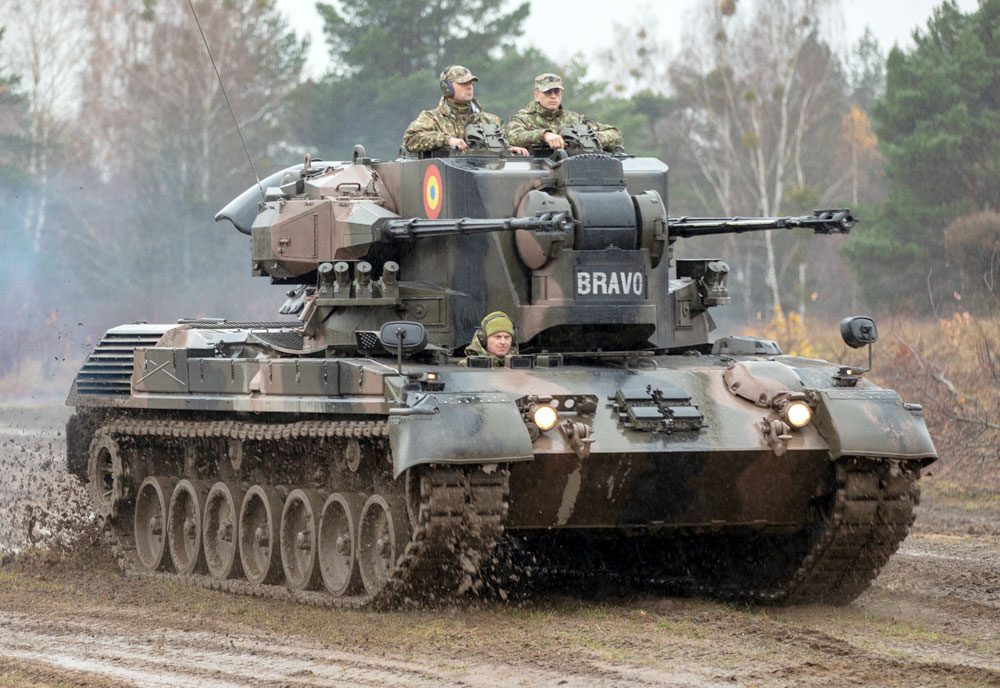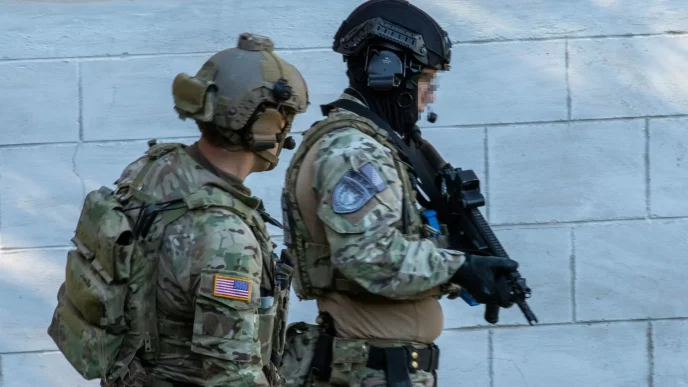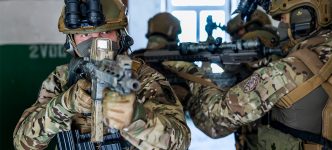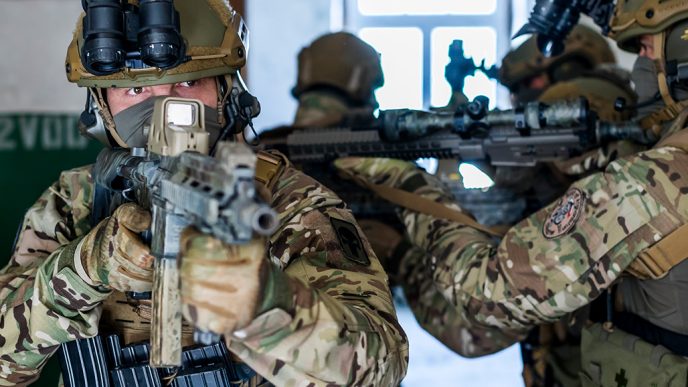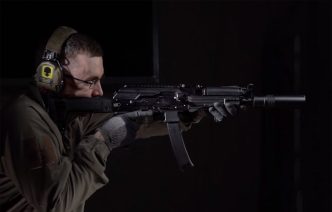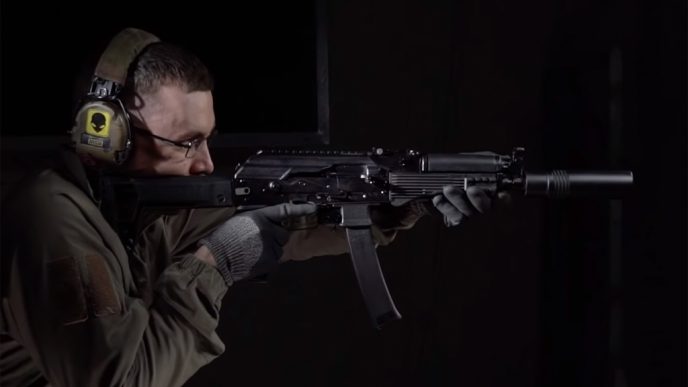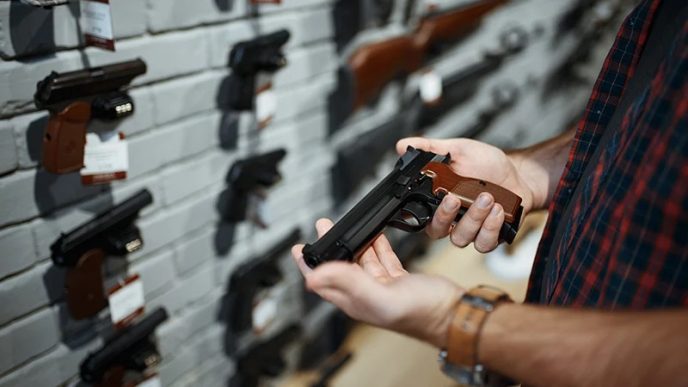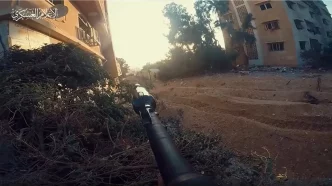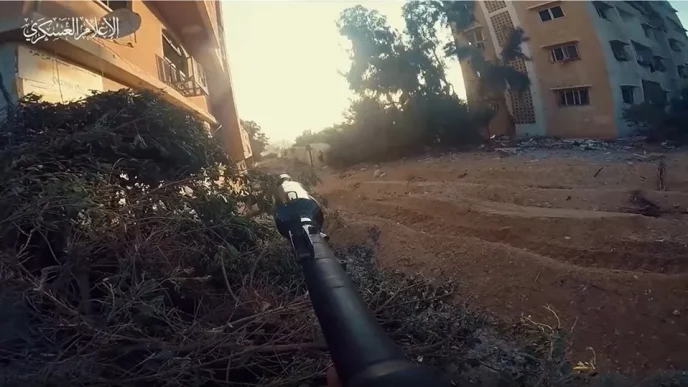Flakpanzer Gepard is a German self-propelled anti-aircraft gun (SPAAG) with two 35mm cannons with a radar. Among the capability to shoot out planes from the sky, Flakpanzer Gepard is also capable of firing APDS rounds. These are dedicated anti-armor rounds which are of no use against aircraft. The Gepard carries them specifically for self-defense.
Key recognition features
- Based on Leopard 1 MBT chassis with a much larger turret
- Surveillance radar above turret rear that retracts for traveling, tracking radar on the turret front
- Twin 35mm cannon with muzzle velocity measuring equipment mounted externally on each side of the turret
Development
The Flakpanzer Gepard (Flugabwehrkanonenpanzer Gepard) was developed in the late 1960s to meet the requirements of the German Army with prime contractor Contraves of Switzerland. Oerlikon-Buhrle was responsible for turret and armament, Siemens for tracking radar, Hollandse Signaalapparaten for search radar, and Krauss-Maffei/Porsche for chassis power-supply system. After trials and modifications, the German Army adopted Flakpanzer Gepard, with 420 built between 1976 and 1980. Belgian Army took delivery of 55 Gepards from 1977 to 1980.
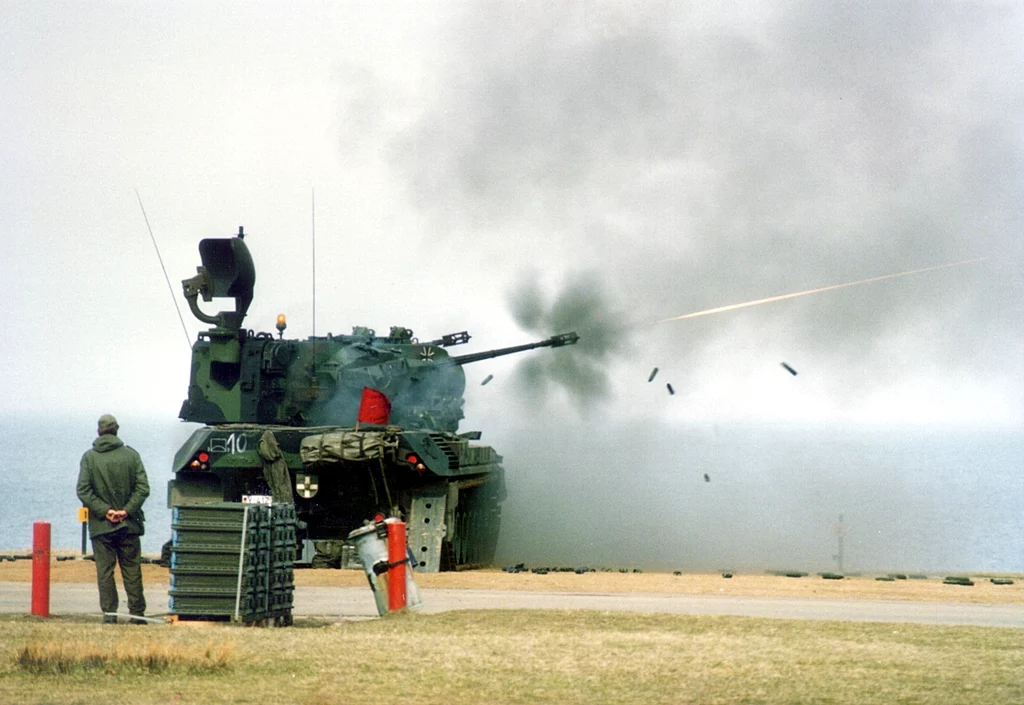
The turret has a powered traverse through 360 degrees, and the twin 35 mm Oerlikon KDA cannon have power elevation from – 10 degrees to +95 degrees. The all-weather fire-control system includes computers, surveillance radar (turret rear), and tracking radar (turret front).
Variants
The Netherlands Army version is called the CA 1. It has different tracking and surveillance radars and six smoke grenade dischargers on each side of the turret front, whereas German and Belgian Gepards have four. 95 CA 1s were delivered to the Netherlands Army from 1977 to 1979.
To extend the operational life of part of their Gepard and CA 1 fleet into the next century, Germany and the Netherlands are carrying out a major improvement program. The Flakpanzer Gepards used by Belgium is to be phased out of service.
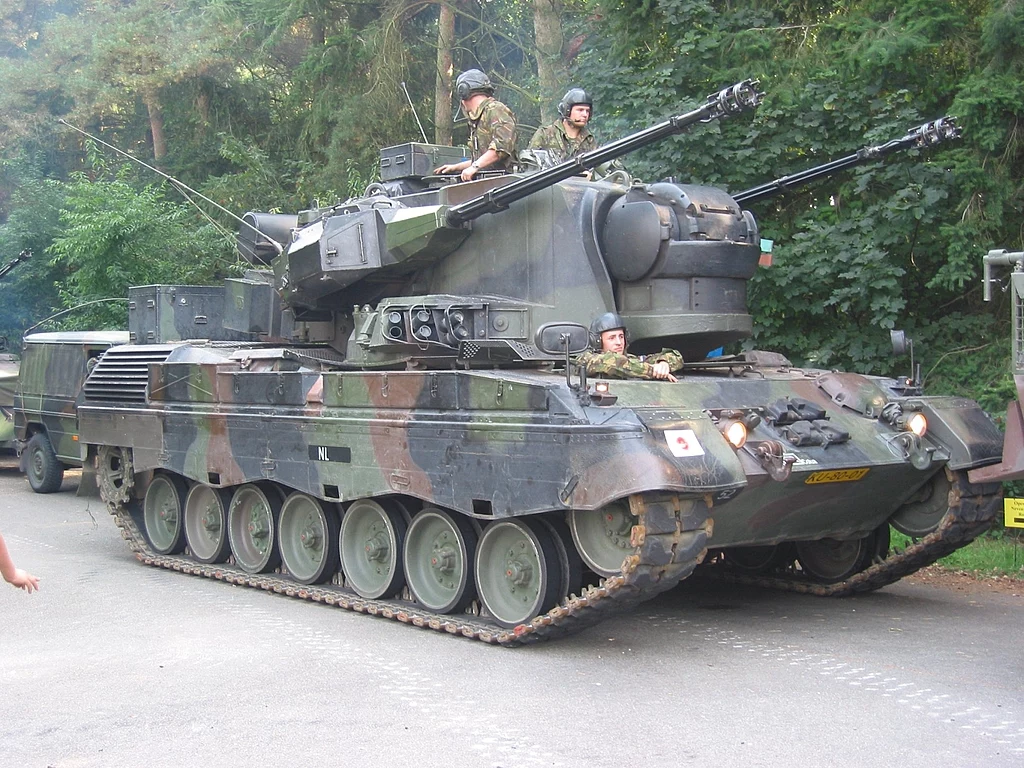
Status
Production complete. In service with Belgium, Germany, and the Netherlands. In 2022, during the Russo-Ukraine war, the German government donated a dozen Gepards to the Ukrainian Army.
Manufacturer
Krauss-Maffei, Munich, Germany, assembled complete Gepard/CA 1; prime contractor Contraves, Zurich, Switzerland.
Technical specifications
| Crew: | 3 |
| Armament: | 2 x 35mm cannon, 2 x 4 smoke grenade dischargers |
| Ammunition: | 620 (AA) and 40 (AP) |
| Length gun forwards: | 7.73m |
| Length hull: | 6.85m |
| Width overall: | 3.37m |
| Width over tracks: | 3.25m |
| Height radar up: | 4.03m, 3.7m (Dutch version) |
| Height periscopes: | 3.01m |
| Firing height: | 2.37m |
| Ground clearance: | 0.44m |
| Weight, combat: | 47,300kg |
| Weight, empty: | 44,800kg |
| Power-to-weight ratio: | 17.54hp/tonne |
| Ground pressure: | 0.95kg/cm2 |
| Engine: | MTU MB 838 Ca M500 10-cylinder multi-fuel developing 830hp at 2,200rpm |
| Maximum road speed: | 65km/h |
| Maximum road range: | 550km |
| Fuel capacity: | 985 lit |
| Fording: | 2.5m |
| Vertical obstacle: | 1.15m |
| Trench: | 3m |
| Gradient: | 60% |
| Side slope: | 30% |
| Armor: | 40mm max (estimate) |
| Armor type: | steel |
| NBC system: | Yes |
| Night vision equipment: | Yes (driver) |
